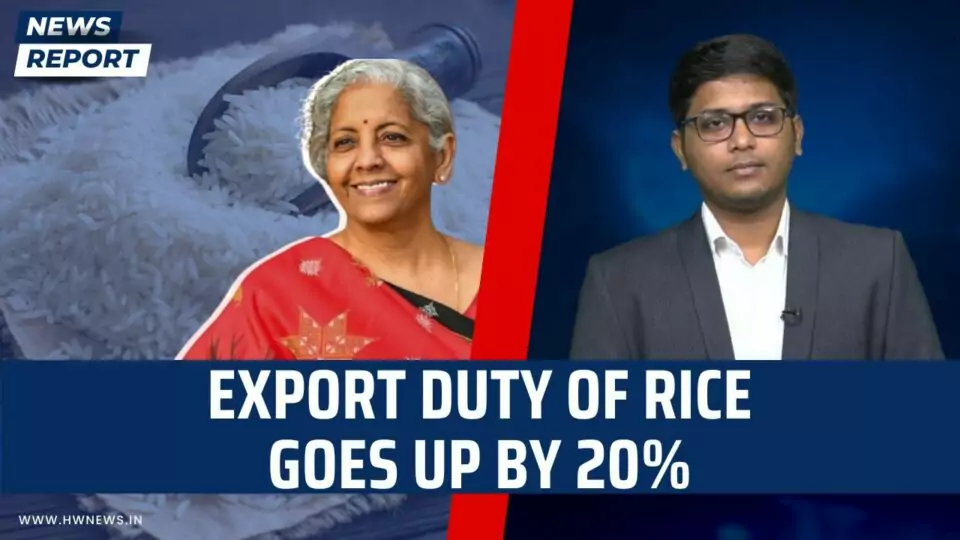To secure a consistent rice supply within India and curb the rise in prices, the Centre has introduced a 20 percent export duty on parboiled rice. This decision comes a month after the government imposed a ban on the export of widely consumed non-basmati white rice. The Ministry of Finance released an official notification on Friday, August 25, indicating that this policy is now in effect and will remain so until October 16, 2023. However, there’s a provision for specific situations. Shipments of parboiled rice that are currently held at customs ports, without “”let export order”” (LEO) approval and supported by valid “”letters of credit”” (LCs) issued before August 25, 2023, will be exempt from this export duty. This move effectively extends the restrictions to cover all forms of non-basmati rice, which make up roughly 25 percent of the country’s total rice exports. This action follows the earlier prohibition on non-basmati white rice exports implemented in July 2023, aimed at stabilizing the domestic rice market. At present, the average retail price for parboiled rice across India stands at ₹37-38 per kilogram, while basmati rice is priced at ₹92-93 per kilogram. Traders have indicated that the free-on-board price for parboiled rice is approximately $500 per tonne, and for basmati varieties, it reaches $1,000 per tonne. India holds a market share of about 25-30% in the worldwide trade of parboiled rice. Furthermore, to alleviate concerns, Food Secretary Sanjeev Chopra announced the release of an additional stock of two lakh metric tonnes (LMT) of rice into the market to help keep prices under control. Analyzing data from the first quarter of the current fiscal year, we see a notable increase in non-basmati white rice exports. The figures have surged to 15.54 lakh tonnes, up from 11.55 lakh tonnes during the same period last year. This surge in exports has significantly contributed to the decision to implement these measures to curb the rising prices of this essential food commodity. As a consequence of these measures, India has observed a rise in consumer price inflation. In July, the retail inflation rate reached a 15-month high at 7.44 percent, compared to the previous month’s 4.87 percent. This spike is largely attributed to the increasing cost of food items. When looking at the annual statistics, India emerges as a key player in the global rice market. The export of basmati rice accounted for $4.8 billion in terms of value, with a volume of 45.6 lakh tonnes during the 2022-23 period. In parallel, non-basmati rice exports contributed a value of $6.36 billion and a volume of 177.9 lakh tonnes in the previous fiscal year. According to data from the Ministry of Agriculture, rice production in India is estimated to have risen to 135.54 million tonnes during the 2022-23 crop year, a significant increase from the previous year’s 129.47 million tonnes. According to a report by Mint, the objective is to slow down or delay shipments. By 15 October, the government will have a fair idea about expected rice production. The Indian government has also taken similar measures for other essential commodities. Recently, they introduced a 40 percent export duty on onions to ensure a sufficient domestic supply.
#Rice #RiceExport #BasmatiRice #NirmalaSitharaman #MinistryofFinance #ParBoiledRiceMillPlant #BoiledRice #Onion #PMModi #BJP #Congress #IndianGovernment #ModiGovernment #ExportDuty #IndianExporters #HWNews
As an independent media platform, we do not take advertisements from governments and corporate houses. It is you, our readers, who have supported us on our journey to do honest and unbiased journalism. Please contribute, so that we can continue to do the same in future.

